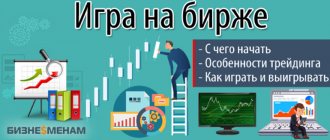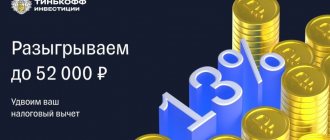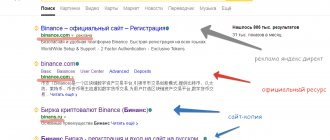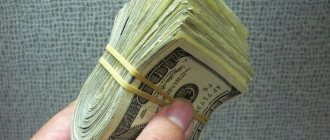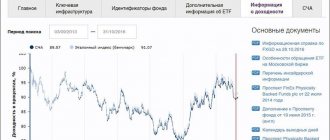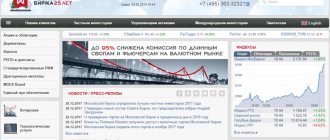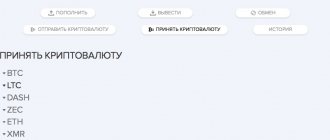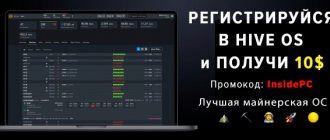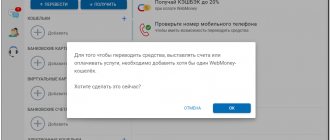The futures market is one of the most promising investment sectors in the whole world. Nowadays, large companies that insure their stock portfolios, investors, experienced traders and beginners are engaged in trading financial instruments.
Many of our compatriots dream of becoming real stock exchange sharks. I always advise such people to start their journey with the FORTS market and contracts such as Sberbank futures. Such agreements are more accessible to a new stock market player.
Introduction to futures - what they are and what they are for
Futures (from the English “futures” - “future”) is a contract for the future delivery of goods between the buyer and seller. Refers to obligations. In slang they are called "futures".
The main purpose of futures is to hedge risk on the future price of the underlying asset. This mechanism was invented a long time ago and made it possible to smooth out price fluctuations and plan 6-12 months in advance.
Each futures contract has an expiration date. In this regard, they are similar to options and bonds. Thus, it is impossible to be a futures holder forever.
Stock futures are traded on the Moscow Exchange with expiration in March, June, September, and December. The deadline is the third Thursday of the month. Oil has contracts with expirations for every month.
There are two types of futures:
- Calculated. At the time of expiration, the trader is supplied with funds at the current rate, taking into account profits and losses for each contract;
- Delivery. The underlying asset (oil, grain, livestock, etc.) is delivered;
Note Futures for goods and raw materials on the Moscow Exchange are settled, and futures for shares are deliverable.
- What are futures in simple words;
How to read a futures ticker on the Moscow Exchange
Futures contract tickers on the derivatives market (FORTS) have the following format:
[TICK]—[MM].[YY]
Where:
- TICK — ticker of the underlying asset;
- MM—execution month;
- YY—year of execution;
For example, SBRF-12.21 is a futures contract on Sberbank shares with execution in December 2022.
What are Sberbank futures for?
As I said, futures are sold in FORTS. These financial instruments are generally used for two purposes:
- speculation;
- financial risk insurance.
Risks are usually insured by the owners of investment portfolios. Investors do this in case of a sharp and unexpected drop in the price of shares of the asset. Having a futures contract to sell at a set price minimizes losses for the portfolio owner. The main disadvantage of such schemes is the lack of benefits when the value of shares increases. Indeed, in this case, the loss resulting from the implementation of the contract destroys the increase in the profitability of the asset.
Speculative futures trading is ideal for making profits. The main goal of such manipulations is not the sale or purchase of an asset. The main thing here is to earn a decent income. To carry out such transactions, a trader does not need to have a large amount of money on hand. It is quite enough to provide a guarantee. Its amount is fixed by the exchange on which trading operations are carried out. Often this figure is several times less than the pricing policy of the contract itself.
The Moscow Exchange trades Sberbank futures wholesale and retail. However, you cannot simply come and buy a couple of contracts on this exchange. All operations of this kind are carried out through a broker.
Therefore, every new trader is simply obliged to acquire his own intermediary in the financial market.
Relatively recently, investors communicated with brokers over the phone or through face-to-face meetings. Now things are much simpler. A contract with a broker allows the client to work on the World Wide Web. For these purposes, the trader is connected by the broker to the exchange terminal. Sales and purchase transactions are carried out through it.
Trading futures on the Moscow Exchange - step-by-step instructions
How to start trading futures on the FORTS derivatives market? Until you start, there will be a lot of questions about what and how, so first, let's choose a broker and open a brokerage account.
Without a broker, individuals do not have direct access to futures trading on the exchange. Just like for trading stocks, bonds, ETFs, currencies.
Step 1. Register with a broker
To trade futures, you need to open a brokerage account. It can only be opened through stock brokers with a license from the Central Bank.
There are many brokers to choose from. Not everyone will have access to trading on the derivatives market. There will also be differences in the convenience of the mobile application for trading (some people don’t have them), commissions and the list of available financial instruments for trading.
I recommend working with the following brokers (I work through them myself):
- Finam (promotion: Free Trade tariff, trading without commission forever)
- BCS Broker
The registration form looks like this:
What are the advantages of these brokers:
- There are all available financial instruments (stocks, bonds, ETFs, futures, options);
- There is access to the Moscow and St. Petersburg stock exchanges;
- Minimum commissions for trading turnover;
- Free deposit/withdrawal;
- Convenient mobile applications for trading;
- Registration can be done remotely;
- Which broker to choose for trading on the stock exchange;
- How to choose a broker for the stock exchange;
Step 2. Opening a brokerage account
In your personal account we go through the procedure for opening a brokerage account. To open, you don’t need to go to the broker’s office; everything is done remotely.
There will be several options for brokerage accounts to choose from. To trade futures, you can open a single cash position (single cash position) or an IIS (individual investment account). The latter makes it possible to receive a tax benefit if the account lasts more than three years.
Step 3. Top up your account
You can fund your brokerage account in two ways:
- Cash (you need to go to the broker's bank);
- Interbank transfer (remote transfer);
Let's take a closer look at the second option with an interbank transfer to a brokerage account.
You can transfer money to the exchange without commission through a Tinkoff debit card. The Tinkoff card is free to use, interest is charged on the balance (6.0%), and cashback on all purchases. Overall, a very convenient card, read in more detail: review about the Tinkoff card.
Step 4. Example of futures trading through the application
Once you have funds in your brokerage account, you will have access to futures trading. The broker will provide access to terminals for trading. For example, this is what the interface looks like when purchasing Gazprom futures (ticker GZPR) through the Finam Trade mobile application (broker Finam):
The application also provides a convenient opportunity to view the current trading schedule of any financial instrument, including futures:
The futures order book with all active limit orders is conveniently presented:
If you want to trade futures via your computer, you will need to install the Quik trading terminal. More details about the principles of trading on the stock exchange are written in the articles:
- How to start trading on the stock exchange - instructions;
- How to buy shares - detailed instructions;
- How to invest in stocks - a detailed description;
- How to start trading shares on the stock market;
One futures contract can contain 1, 10, 100, or 1000 shares. It all depends on the specific company.
Start trading futures on the exchange now »
How to calculate leverage on stocks, futures, forex
Many novice traders do not fully understand what leverage is, what leverage they are trading with, and how to calculate the amount of leverage in trading.
Below I have described the main points related to leverage in the stock market, futures and forex currency pairs.
Read about each one in turn to get the general idea.
Leverage (leverage, leverage) allows you to open positions whose size significantly exceeds the amount of the trader’s own funds on the deposit. Leverage increases profits in trades, but also the size of losses in case of wrong decisions.
Calculation of leverage when trading stocks
On stocks, leverage is formed through margin lending.
The broker can lend the same amount of money as your own funds are in the brokerage account. A leverage of 1 to 2 is formed. When trading shares on the Moscow Exchange, larger lending is also permissible.
You will have to pay an interest rate to the broker for using borrowed funds. When trading shares on the Moscow Exchange, the interest rate for using borrowed funds is several times higher than when trading shares on the American exchanges NYSE and Nasdaq. Currently it is 13-19% per annum.
There is a nuance. You can use borrowed funds for free if the trader closes an open position on the same day he opened it. This will be considered intraday trading. If the position is transferred overnight, then an obligation arises to pay interest for each day the borrowed funds are used.
When trading shares on the American exchanges NYSE, Nasdaq, the broker can provide leverage of 1 to 4 for intraday traders. If the trader decides to transfer the position until the next day, the maximum leverage amount will be 1 to 2.
It is worth knowing that to conduct intraday trading (day trading) on the NYSE and Nasdaq exchanges, the size of a brokerage account by law must be at least $25,000.
For smaller deposits, you are allowed to make no more than 3 intraday (opened and closed a position on the same day) transactions within 5 trading sessions. If this rule is violated, a warning will be issued. In case of repeated violation, the brokerage account will be frozen for 90 days. For the third violation, the account may be closed.
Some traders legally bypass the $25,000 minimum deposit requirement. To do this, open an account not with a broker, but with a prop company that specializes in day trading. Then the entry threshold drops to $2,000, but there is an additional fee for the platform.
To buy a share, you need to pay the full price of the share, and not just some part of it, as in futures.
If a stock costs $20, then you need to pay all $20 to buy it.
Leverage when trading shares is formed through the use of borrowed funds that the broker is ready to provide to his client.
Calculation of leverage when trading futures
On futures, using leverage is free and you do not have to pay interest.
If a dollar-ruble futures costs 64,400 rubles, then in order to buy a futures contract you do not need to pay all 64,400 rubles at once. Because the delivery of value is deferred to the settlement date of the futures contract.
It is enough to provide a guarantee (collateral, collateral, margin), which is established by the Moscow Exchange. Today its size is 4145 rubles or 6.5% of the value of the dollar-ruble futures.
By depositing 4,145 rubles you will manage a position worth 64,400 rubles. Margin leverage will be 1 to 15.5 (RUB 64,400 / RUB 4,145).
For different futures, the exchange sets its own size of collateral and the cost of the price step. Their magnitude also changes over time.
For example, for futures on the RTS index, the guarantee coverage today is 11.78% of its value in rubles.
The futures price for the RTS index is 153,000 points. The minimum price step is 10 points. The cost of the price step today is 12.8 rubles.
10 points = 12.8 rubles.
The cost of a futures contract on the RTS index will be 195,840 rubles (153,000 points / 10 points * 12.8 rubles).
The guarantee as of today is 23,074 rubles for 1 contract.
Thus, the guarantee amount is 11.78% (RUB 23,074 / RUB 195,840 * 100) of the futures price. Margin leverage is 1 to 8.5 (RUB 195,840 / RUB 23,074).
The margin leverage on the dollar-ruble futures (1 to 15.5) is higher than that of the RTS index futures (1 to 8.5). But this does not mean that it is riskier to trade first.
The price fluctuations of a currency pair in percentage terms are usually more modest than those of a stock index. Therefore, the margin leverage on currency futures is set higher.
The size of the futures contract is constantly changing by the exchange. It needs to be tracked on the Moscow Exchange website (moex.com) in the Derivatives Market section in the specifications of the futures contract of interest.
The value of GO can be raised by 25-50% before the holidays, 2 or more times during very high volatility in the market.
To satisfy the requirements for an increased size of GO, you need to have free funds on deposit. If there are not enough funds to maintain the GO, the position will be forcibly closed.
It is important to understand that the margin leverage of 1 to 15.5 on the dollar-ruble futures does not mean that this is leverage for the amount of your deposit.
This is leverage built into 1 contract.
Your deposit is 150'000 rubles.
You bought 2 futures contracts for the dollar-ruble pair, depositing 8,290 rubles of collateral (4,145 rubles * 2 counters). This allowed you to manage a position of 128,800 rubles (64,400 rubles * 2 contra).
The cost of an open position does not exceed the amount of your deposit of RUB 150,000.
If you buy 8 contracts, depositing a margin of 33,160 rubles (4,145 rubles GO * 8 contras), then the cost of the position will be 515,200 rubles (64,400 rubles * 8 contras).
The cost of an open position will exceed the deposit size by 3.4 times (RUB 515,200 / RUB 150,000).
You control the risk you take by determining the number of contracts you intend to trade.
Calculation of leverage when trading forex
Currency pairs are traded in the Forex market. Three types of lots are used for their purchase and sale.
Standard lot – 100,000 units of the base currency. For currency pairs where the quoted currency is the US dollar, the cost of one pip is 10 USD.
Mini lot – 10,000 units of the base currency. For pairs with US dollar as the quoted currency, the value of a pip is 1 USD.
Micro lot – 1000 units of the base currency. For pairs with US dollar as a quote, the pip value is 0.1 USD.
Some brokers offer leverage of 1 to 100, 1 to 200, even 1 to 1000 depending on the jurisdiction in which they are located.
In the US the maximum leverage is 1 in 50 for a small handful of pairs. More often, the leverage is between 1 in 20 - 1 in 30. In the European Union, the ESMA regulator has reduced the maximum leverage to 1 in 30 - a margin of 3.33% of the transaction value.
Today the EUR/USD pair is trading at 1.08. To buy euros for 50'000 USD, you need to make a margin of 1800 USD (50'000 USD / 30 * 1.08).
Having a leverage of 1 to 30 does not mean that you need to use it for the entire deposit. Forex trading can be done even without leverage, or with a leverage that is comfortable for you relative to the deposit.
For example, your deposit is 2000 USD and you are trading the EUR/USD pair.
You bought 10'000 EUR with a margin of 360 USD (10'000 EUR / 30 * 1.08).
The position value is 10'800 USD (10'000 EUR * 1.08).
The leverage on the deposit will be 1 to 5.4 (10'800 USD / 2000 USD).
The change in the price of the most liquid currency pairs during the day is usually tenths of a percent. A 1% price movement for major currency pairs will be considered a big day. For stocks, such fluctuations are par for the course.
This is one of the reasons why traders use higher leverage in forex.
Dmitry Boytsov
PS More valuable information in the instructions Risk control in trading.
Basic concepts when trading futures
3.1. Warranty
When buying/selling futures, the trader pays only part of the transaction amount. It is called warranty coverage (abbreviated as GO).
For example, a futures contract on Gazprom costs 40,000 rubles; at the time of purchase, only 4,000 rubles will be written off from the buyer as collateral (margin). We can say that the remaining 36,000 rubles is free leverage. This is one of the most important advantages when trading futures.
Typically, the GO equals up to 10% of the total contract value. Such a low margin is only for the most liquid instruments.
Security collateral may vary depending on price volatility and contract value. If price fluctuations increase, then the requirements for GO become higher.
If a large futures position is opened, there is a risk that the next day there may not be enough funds to secure the GO. In this case, you need to either urgently replenish your brokerage account or close part of your positions.
Taking on high leverage is extremely risky, since any unexpected event can significantly increase fluctuations and cause the GO to increase. The price may go against the investor, thereby forcing him to urgently record losses.
You can view the current GO and other characteristics for each contract on the Moscow Exchange website for a specific futures contract.
3.2. Variation margin
Variation margin is the fixation of an intermediate result on current open positions on the derivatives market. In this case, there can be either an accrual or a write-off. The accrual occurs if the trader correctly guessed the movement of quotes, otherwise the amount will be written off as a minus amount.
The moment of calculation of variation margin is called clearing. On the Moscow Exchange, clearing occurs twice a day: 14:00-14:05 and 18:45-19:00. At this time, futures trading is suspended.
For example, if you open a position at 10:10 and at 14:00 it will be plus 560 rubles. Then this money will be credited to the account at 14:05. If a position is closed at 16:30 with a profit of 500 rubles, then at 19:00 there will be a write-off in the amount of 60 rubles.
There is also a nuance with the fact that if a position is opened and closed between clearings, then the profit on it will be credited at the time of the next clearing. For example, if a trader successfully speculated from 19:00 to 23:50 and closed all positions, then the profit will be credited to the account only at 14:05 of the next trading day.
3.3. Price limits (bars)
When trading futures, the Moscow Exchange sets an upper and lower limit. Typically these are limits of plus/minus 5%. If the price reaches the level, then trading is stopped, and then restarted with new boundaries.
The price may be at the bar several times in a row, and the worst thing is that traders will not have the opportunity to sell the asset, since simply no one is buying it at the current price, and it is impossible to sell beyond the bar.
There have already been cases in history when the bar was triggered three times in a row. That is, those who were in the wrong direction immediately received -15% for the position.
3.4. Open Interest
Open interest is the number of open contracts. 1 long contract is 1 short contract for someone. Essentially, it displays the number of futures that are issued as a result of trading.
Some build trading strategies on open interest data. For example, if interest grows and the price approaches peaks, it can usually end in a reversal. But this strategy is only a hint.
How to make money on a falling exchange rate: futures
In the last post, I was asked in surprise - how can you manage to make money from a falling dollar? After all, it is growing, the purchasing power of the ruble is falling along with it, everyone is getting poorer, why do you dare to make money from this?) Well, in general, welcome, not such tricks are possible in the stock market, and today we will talk about one of them .
Futures are a stock derivative, a kind of bet on some asset/commodity/rate. It was originally created to hedge risks - for example, in six months I need a ton of steel, but now I don’t want to buy it, and I’m afraid of rising prices. Therefore, I agree with the seller that I will buy a ton of steel from him in six months at the current price, and leave him a small deposit. Whatever the price of steel will be in six months, I will buy it at the indicated price (attention, this is an obligation, that is, I am obliged to buy the steel at this price, even if by that time its price on the market has fallen 10 times). You can read more in detail in any article or textbook, it’s difficult to understand right away, but I’m more about practical application.
It’s easy to connect to the FORTS derivatives market on the Moscow Exchange - in Alpha Direct’s personal account, click “register an account”, 150 rubles and 1-2 days - and voila, you have access to it (before this, futures were simply displayed in the application, but do something you can't do it with them). I don't think it's much more difficult with other brokers. Now let's see how you can use the derivatives market for investment purposes.
Hedging For example, you have a portfolio of Russian shares (or an index), and you are afraid that the market is about to fall and your assets will lose value (for example, you are afraid of the second wave of the coronavirus crisis). You can sell shares and switch to cash, but as a rule you really don’t want to do this (divas, pillow and all that). It would be much more convenient to sell futures on the MICEX/RTS (leverage 1 to 10, that is, for a portfolio of 600k you will need to pay 60k as collateral), for the amount of your portfolio. If the market really falls, then the drawdown in shares will be compensated by futures. If you didn’t guess correctly, and the market, on the contrary, grew, then you will have a loss on the future, which will be compensated by the growth of your portfolio.
That is, in the worst case, you will simply remain with your own, but in the event of a real market drawdown, you will make money on this without selling shares (even vice versa, by closing the futures position at the bottom and using the income to buy additional shares, which then, together with your portfolio, will grow back ). But at the same time, by shorting the index, you cut off all the profits from the growth of the index (but will continue to receive dividends, for example).
Or you keep rubles on deposit, and are afraid that the dollar exchange rate will jump and your savings will depreciate, and you are going to go to the USA in three months or buy a MacBook. You can transfer the deposit to dollars, but the rate for them is completely different, or you have a non-withdrawable deposit (which is more likely). The solution is similar - if you think that today’s exchange rate suits you (73 rubles), then you simply buy futures on the dollar exchange rate (leverage 1 to 16, for 730k rubles you need a deposit of 45k). If after three months the rate really falls (from 73 to 83, for example), then the profit on the future will just compensate for those additional rubles that are needed to buy the same 10k dollars. If, on the contrary, the rate strengthens, to 63, then again, for 730k rubles you will buy more dollars than you planned, but the difference will be taken by the loss on the futures. No matter where the rate goes, you will still receive your 10,000 dollars in 3 months for your current 730k rubles (45k security will be returned to you).
That is, in general, hedging allows you to avoid losses, but in the case of using futures, it comes at the cost of avoiding profits. You can make sure that your portfolio does not lose a penny during any cataclysms and crises - but at the same time, no matter how the economy grows, you will not earn a penny more. Not the best prospect) Therefore, such hedging is relevant precisely for a short specific period, when you want to play it safe, or you are directly expecting some negative/positive event.
This is also an excellent option for those who are stressed about “how is it possible, ruble income, currency risks, the exchange rate drops by half every two years.” We take a highly profitable ruble instrument, for example, OFZ or diversion. And we take futures on the dollar exchange rate. And we get a highly profitable stock instrument with a fixed income in dollars; in the case of OFZs, their income is guaranteed by the state, and futures guarantee that if the exchange rate falls, you won’t lose anything (but you won’t earn extra either). Checkmate, witnesses of the falling exchange rate of the ruble =)
Trading Here we are already falling into a gray zone, not an investor one, but I’ll describe why a little lower. Imagine that right now you are sure that the stock market/share/metal/currency will rise in price. If you are an investor, then you buy the entire cutlet, and score - if the asset has increased in price, your portfolio has grown (or you sell and make a profit), if not, you still have the asset, and you are left “in the long term”) . That is, there is a conditionally small risk, small profit, and you physically cannot receive losses. Using leverage is possible, but for this you will have to pay a percentage to the broker and transaction costs, and you won’t be able to do this for long. However, in futures there is no trading of real assets - so there are few costs, and leverage is already built in through the exchange mechanism (guarantee obligations).
In this case, instead of buying an asset, you buy a futures contract on it, with a volume 6-10 times larger (stocks - 6 times, gold - 10 times, index - 10 times, some stocks 3-5 times). Now, every day, during clearing, if the rate has increased, the difference will drop into your account, if it has fallen, it will be written off, and so on as long as you hold the futures (this is called variation margin).
Let's look at a live illustration - March 2020. The Russian market is falling by a third, I wrote a post about this, looked for funds, bought shares that had fallen in price (and I’m not the only one). In total, in March I purchased 152,858 rubles, and these particular items cost 193,280 rubles on August 18, a profit of 26.44% for 5 months (not every site has such a profitability). Let's imagine that on the same dates (March 12, 16, 23, 25) I would buy futures on the MICEX index. The average index size for these four dates is 2314, as of August 18 the index is 3052, up 31% (excluding divs). Having bought index futures instead of shares in March, my 152,858 rubles with leverage would have been equivalent to 1,525,580 rubles, and their growth by 31% would have brought me a full 486 thousand rubles of net profit - 12 times more than I received by buying the shares. But, of course, if the index, instead of growing, had rolled back to the second bottom by another 31%, then I would have received a 486k loss =) (if there were not enough funds to keep the future afloat, that is, the same margin call) . Or, if you carefully buy not one large index future, but a bunch of small ones for each specific stock, the profit would still be 5-6 times higher.
Completely similar - selling futures, or shorts. If you are absolutely sure that some asset is overvalued, you sell futures on them. It turns out that this is exactly the same action as buying in the terminal, only you have -1 unit of asset in your balance) Now, if the price falls, you make a profit (multiplied by the leverage), if you didn’t guess correctly and it is still growing, then you suffer a loss on the position. Shorting is riskier in that you can take more than a 100% loss (you shorted Tesla when it was worth $500, now it's worth $1500, if the futures time comes, you take a loss of 300%, multiplied by 5-10 times leverage )
Pagadi pagadi, but this is disgusting trading, why do we need it? Trading is different, you can buy futures with execution in September, December, and even March 2021 (only there will be little supply there) - that is, it may well play the role of a long-term instrument, although it is not an investment asset. If the issuer does not pay dividends, then what difference does it make what to hold in your portfolio, a stock or a future on it, if you simply expect a change in the price of the asset and want to make money on it? (and you have enough capital to hold a position in a stormy market)
By the way, this is the answer to the question posed in the title of the post - it is with the help of this tool that you can make money on the growth or fall of the ruble exchange rate (or another currency, the yen for example), without any Forex kitchens. But something tells me that even the most stubborn catastrophists, who convince everyone of the imminent collapse of the economy, will not bet a single ruble on their beliefs - because if they are wrong, they will lose that money. Just like I’m not going to short snp500, even if I think that it will collapse sooner or later - firstly, I don’t have a convenient tool for this, and secondly, where am I and where is snp500) Options would help here, also very interesting tool, but alas, Alpha Direct removed them from access, there is very little activity in the Russian Federation on these tools, and again, we still have to reach the bureau market.
As an experiment, I poured some money into the derivatives market, which I don’t mind losing, and opened the following contracts:
Yandex shortened it - it has grown too much in two months, and a P/E of under 200 is already erebor. True, I bought not the current one, but the next future, for December 2020, I’m still an investor =) I bought a long position on the MICEX index - it has already won back the fall in March (in just six months), in theory, of course, I need to short, but I’m holding fists and I believe that he will continue to trample upward)
In 4 days, the position on Yandex brought me 2,736 rubles of loss, but on the Moscow Exchange index - only 1,589 rubles of loss (what should have been shorted, I bought, what should have been bought, I shorted. Listen to Octopus and do the opposite =). Well, that is, you understand, with an investment of 15,500 rubles, losing 4325 rubles in 4 days, or 28% - this is a very, very fast way to lose money, a long-term investor would never dream of such things) (it’s good that I decided not to short the dollar, although I was planning to =) The data on the screen is today’s on a non-working day; unlike stocks, there is no data for the entire period of ownership of the contract.
But it’s also worth talking about the shoulder, it has a very strong influence here. In addition, the peculiarity of futures is that every day the change in positions is recorded in the form of profit/loss from your account (variation margin). For example, in the case of my position on the MICEX index, I have a leverage of 1 to 10, and this means that if the index falls by 10%, the variation margin will gobble up all my guarantee collateral, and the exchange will demand to report money, or will close the position on margin call And if I went a little too far with the size of the bet, then I simply may not have enough money to hold the position, and they will force me to close it - even if the next day the index miraculously grows back by that 10%. Because of the leverage, price fluctuations make a 5-10 times larger difference - with a simple purchase of a stock, a change of 5% per day will not be cold or hot, for futures it will be 25-50% profit or loss.
There is no point in calculating this variation margin; in fact, you still record profit/loss at the time of selling the future (or executing it). But on the account, these operations are of course unnerving, especially if you open many positions - for each of them there will be deposits/debits every day, and on the main investment account I would not do this (now the transaction history tab in alpha is filled with this data, and it is necessary to additionally filter). And the original purchase price is not displayed in the calculations - yesterday's closing price is transferred, and the countdown is carried out from it.
Well, here it is worth recalling the history of Elsper, futures and shorts - playing with fire. To put it extremely simply, he bet that palladium would fall in price, and shorted it in January, when the price was supposedly 1900. Alas, instead, palladium decided to update historical highs in February, and rose in price to 2800 - which is for future meant an increase of +200%, that is, suddenly you need to deposit twice as much into your account as was in your account. Either there was no such money, or there was no desire to lose even more, so the positions were closed either with a margin call or manually - with a loss, of course. Then in March, for some time, the price fell to 1500, which would have made it possible to make money on the future (that is, the initial assumption that palladium was overvalued was correct), but alas (subsequently the price of palladium returned to values around 2000).
Everyone can draw their own conclusions, in any case, with the help of futures you can squander your depot extremely easily and naturally, the Ministry of Health warns) For me, this is just one of the stock market tools that is worth studying and mastering, not being scared by its name, and then, if favorable situations - use to obtain higher returns. For some, this will be an opportunity to hedge risks and receive dollar returns on the Russian market. For those who like to tickle their nerves, this is a completely legal casino, with daily movement of funds in normal volumes. For a long-term investor, using futures will not provide any significant benefits.
But now you know how you can make money from the fall of the ruble exchange rate) The next stop is options, where there is no obligation to buy, but there is the price of the contract itself, but you won’t be able to figure it out without half a liter, so the analysis will not be soon. I’ll hold my positions for fan, maybe I’ll transfer some small amounts, and put the fixed assets into the portfolio for the long term as before.
ATTENSION: I strongly do not recommend entering futures in search of easy money and quick profit. This is only true in beautiful fairy tales; in reality, trading is hard and constant work, which much more often leads to ruin than to wealth. The post is written solely for informational purposes, in order to know about the existence of such a tool and its applicability. Any actions in the terminal are at your own peril and risk.
Recommend to friends →
Leave a comment ↓
Categories: Stock market.
Nuances when trading futures
1 Futures do not pay dividends, so at the moment when the register is closed for shares, you will not see a dividend gap on the futures chart. It is also worth noting that due to the lack of dividends, futures price growth will be lower, especially before the cutoff.
2 Futures with the nearest expiration have greater liquidity. For speculation, it is better to trade only short-term contracts, otherwise it will be extremely inconvenient due to wide spreads.
3 The trader pays a commission for trading turnover not on the transaction amount, but on the number of contracts. Different brokers have different commissions. Usually this amount is about 1 ruble. The more expensive the contract, the lower the commission. For example, futures for VTB cost 5,000 rubles, and for Gazprom 36,000 rubles. We can say that the trader will have a commission 7 times less when trading Gazprom futures.
4 The futures price follows the price of the underlying asset. In this case, most often the price is slightly higher, since the fact that before delivery the money will depreciate slightly (discounting effect) is taken into account.
The longer until the expiration date, the more expensive the contract. In fact, this is a kind of payment for free leverage.
5 The futures price may be negative. This was the situation in April 2022 with quotes for light oil WTI.
6 Futures expire on the third Thursday of the month. Usually this is on the 15th-20th of the month.
7 If you trade deliverable futures, the commodity will be delivered at expiration. It is necessary to carefully monitor this moment so as not to end up with real wagons of oil or a herd of cattle.
8 During periods of high volatility, the guarantee can be raised up to 100% of the purchase price.
9 Futures clearing occurs twice a day:
- 14:00–14:05 — intermediate clearing;
- 18:45–19:00 — main clearing;
At this moment, all profits and losses on open contracts are balanced (summed up) and payment occurs in the form of variation margin. If a loss is made, the money is deducted.
This may seem a little strange. For example, if a profit was made during the evening session, then it will only go to your brokerage account at the next clearing.
10 Futures are at least % more expensive than spot, depending on the Central Bank rate and days before expiration. The price will converge towards spot as it approaches expiration. In fact, the investor holds the same leverage.
Main parameters of Sberbank futures
Each individual financial contract has its own abbreviation. The tool I describe is no exception to the rule. Each Sberbank futures contract in QUIK is deciphered as follows:
- the first two letters of the underlying asset code are SR symbols;
- the third letter is the month of execution;
- the fourth character is the year of execution.
According to the specification, contracts of this kind are staged. The standard size of each individual lot is 100 ordinary shares. The guarantee of these futures is usually established by the Moscow Exchange.
At the moment, this value is at around 1,300 rubles per position. The cost and price increment is about 1 ruble. More recent data on these figures can be found directly on the exchange.
Futures Trading Strategies
There are two main trading strategies:
- Speculation;
- Hedging;
5.1. Speculation in futures trading
Most often, traders use futures solely to make money. This is due to low trading commissions, high liquidity and conditionally free leverage.
For example, to short a stock you will have to pay for leverage in any case. In the case of a futures short, there is no need to pay for leverage, since only a portion of the collateral needs to be paid.
Futures are traded from 7:00 to 23:50, that is, their chart will contain gaps less often, all news and events are played out instantly.
Also, only through futures can you trade goods, and this is a rather large and interesting market. The main interest is that it is cyclical. Commodities often either rise or fall. When there is another growth, you can make money simply by following the direction of the trend.
5.2. Hedging
Many are long-term investors and do not want to exit stocks in the event of a correction. For example, they may have large positions or don't want to lose the tax benefit of holding the stock for three years.
- How to reduce tax on investment profits;
Let the investor have purchased shares of Sberbank back in 2022. Now it is 2022, the investor sees that quotes may fall. Instead of selling shares, he can open a short position on Sberbank futures, thereby hedging the price against a fall. As a result, if the quotes actually fall, then he will make a profit, and if they rise, then he will make a loss, but there will be a plus on the shares, which will cover the loss.
In addition, you can open a short position on the RTS index. It represents the dollar value of Russian stocks. As a rule, the RTS index falls faster than the Moscow Exchange index, since during periods of falling stock market, the ruble quotes fall against the dollar.
- How to make money from falling stocks;
- How to buy/sell Sberbank shares;
List of futures trading instruments
All derivatives are traded on the forward market (FORTS). This section occupies a significant share in the total trading turnover of the Moscow Exchange.
As of 2022, there are more than 50 futures contracts available for trading. The Moscow Exchange has three main sections with futures.
- Stock:
- Shares (only the most liquid);
- Indices (RTS, MICEX, BRICS countries);
- Volatility of the MICEX stock market;
- Monetary:
- Currency pairs (ruble, dollar, euro, pound sterling, Japanese yen, etc.);
- Interest rates;
- OFZ basket;
- Basket of Eurobonds RF-30;
- Commodity:
- Raw sugar;
- Precious metals (gold, silver, platinum, palladium);
- Oil;
- Average price of electricity;
For example, there are the following stock futures with ticker symbols:
| Ticker | Promotion |
| SBRF | Sberbank |
| SBPR | Sberbank-p |
| GAZR | Gazprom |
| LKOH | LUKOIL |
| ROSN | Rosneft |
| GMKN | Norilsk Nickel |
| TATN | Tatneft |
| MTSI | MTS |
| HYDR | RusHydro |
| AFKS | AFK System |
| AFLT | Aeroflot |
| ALRS | Alrosa |
| FEES | FGC UES |
| FIVE | X5 Retail Group |
| IRAO | Inter RAO |
| MAGN | MMK |
| MGNT | Magnet |
| YNDF | Yandex |
For currency:
| Ticker | Currency |
| Si | Dollar |
| Eu | Euro |
| Ed | Euro/Dollar |
For indexes:
| Ticker | Currency |
| RTS (RI) | RTS Index |
| MXI | Moscow Exchange Index |
| SPYF | S&P500 Index |
For goods:
| Ticker | Currency |
| BR | Brent oil |
| PLD | Palladium |
| PLT | Platinum |
Note In the United States there is the Chicago Mercantile Exchange (CME). This is the largest trading market for futures.
Pros and cons of futures trading
Pros:
- Trading is carried out from 7:00 to 23:50;
- Free leverage is provided;
- For short positions, you don’t have to open margin trading and thereby avoid paying leverage;
- Wide selection of financial assets (indices, commodities, currencies);
- Great liquidity on popular instruments;
Minuses:
- Risks of hitting the price limit and not being able to sell the asset;
- Warranty coverage is constantly changing and this can create problems if large leverage is used;
- Not all stocks have futures, and for those that do, not all have good liquidity;
Related posts:
- Trading mode on the T+2 exchange - what does it mean?
- Investing in OTC Stocks - A Detailed Review
- Foreign exchange market, participants, nuances of trading - a detailed overview
- Applications for trading shares on the stock exchange - what they are and...
- Broker Sberbank - investment experience and review
- Buy Chinese shares for an individual - how to do it
- How to choose a broker for the stock exchange - what...
- How much can you earn by trading - detailed information

